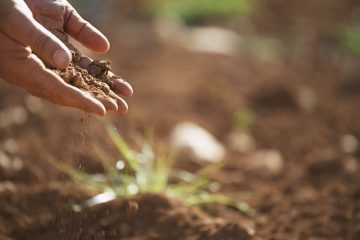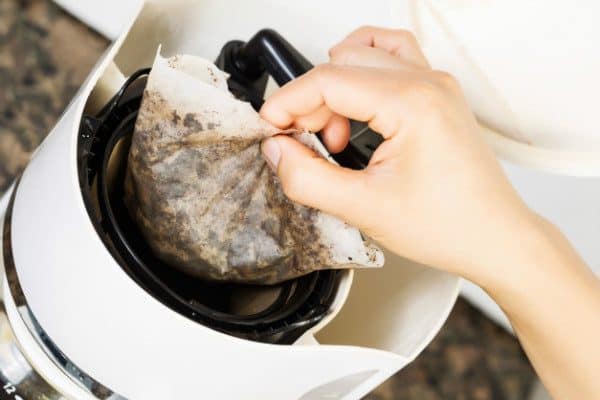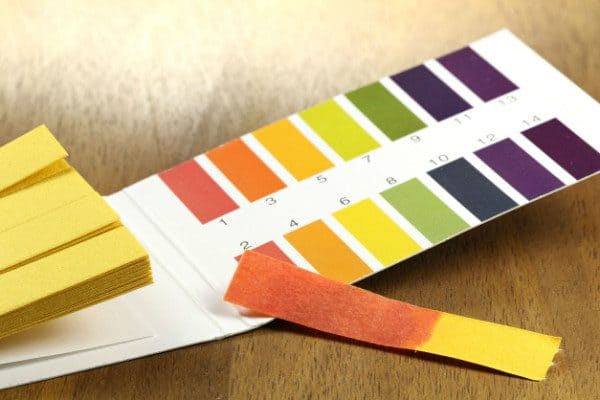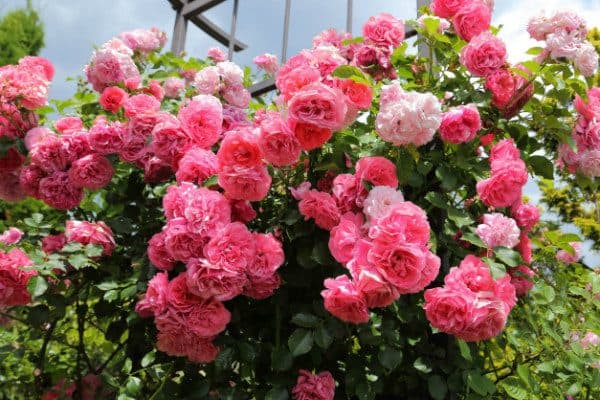Whether you enjoy an occasional cup or have a pot-a-day habit, coffee is one of the most popular beverages to make at home. However, brewing coffee leaves behind unappealing dregs: coffee grounds. What to do with those old coffee grounds? While most of us immediately dump our coffee grounds into the trash, let them help your home inside and out. Here are three ways to use coffee grounds in the garden (and a few ways to use them in your house).
Ways to Use Coffee Grounds in the Garden

When used correctly, coffee grounds can be a great addition to your garden. Many gardeners find it is a safe, natural, and effective way to boost their gardens without using harsh chemicals or pesticides. Use them to boost blooms and berries, and to keep away slugs and snails. Use them in your compost pile to increase nitrogen levels in your soil.
Even if you aren’t a coffee drinker, you may be able to get the benefits. Contact local coffee shops or restaurants to inquire about picking up their grounds for use in your garden. If that doesn’t work, try asking one or more of your coffee-drinking neighbors to help you out.
Benefits of Using Coffee Grounds in the Garden as Fertilizer
Is coffee good for plants? Yes. The benefits of coffee grounds in the garden are fourfold.
Benefits of Coffee Grounds in the Garden
- Aeration
- Water Retention
- Drainage
- Earthworm Attraction
Aeration. Compacted soil is a problem for plants because the soil is compressed, meaning the roots of the plant are unable to get what they need. Aeration breaks up the soil and creates small holes through which oxygen, nutrients, and water can reach the roots. Healthy roots can become strong, and as a result, your plants strengthen.
Water Retention. Water retention is a problem in dry and arid regions, where droughts are common. Even drought-resistant plants are unable to get enough water, and they end up wilting and dying. Coffee grounds improve water retention in soil, and improved water retention means the plants will be able to do more with less water.

Drainage. On the other end of the water retention spectrum, poor drainage creates stagnant water and leave your plants vulnerable to diseases. Soil with good drainage ensures that the roots of the plant can receive the water they need while letting the excess flow away which helps to get rid of soil gnats. Coffee grounds help to break down the soil and allow for better drainage.
Earthworms. Love them or hate them, worms are fantastic for gardens. They move through the soil by tunneling, which creates natural vents through which oxygen and water can flow. They also eat organic matter, and their castings (excrement) contain nutrients that plants love. Coffee grounds are organic matter, so adding them to your garden will attract earthworms, which will, in turn, provide your plants with vital nutrients and drainage.
How to Use Coffee as a Fertilizer
Using coffee grounds to fertilize your garden is simple: work the grounds into the soil around your garden, and you’re set to go. Leftover coffee can work well, too, as long as it’s black or sweetened with real sugar — if you’ve used artificial sweeteners or milk, avoid introducing the grounds to your plants.
What about Soil pH?

You may have heard that coffee grounds will alter the pH level of your garden.
The short answer: unwashed coffee grounds will lower the pH level of your garden (raise the acidity), which is great for plants that like acidic soil, but hurts plants that prefer less acidic soil.
Washed coffee grounds have a pH level of 6.5, which is almost neutral. In layman’s terms, washed coffee grounds will neither increase nor decrease the acidity level of your soil, making them useful for all plant types.
Composting
Two Types of Compost Material
- Green (Nitrogen)
- Brown (Carbon)
One benefit to using coffee grounds in compost instead of using it as a fertilizer is that coffee grounds will increase the nitrogen levels in the compost and, thereby, in your soil. Plants get food from the sun, absorbing ultraviolet light and converting it into food. The process of using sunlight to create food is called photosynthesis. For a plant to properly photosynthesize, it needs nitrogen. Used coffee grounds, as well as used filters, make great compost.
One thing to keep in mind: compost piles need equal amounts of green compost material and brown compost material to benefit your garden. Without a proper balance, your compost pile may not break down and might even start to smell bad.
Green compost material consists of material high in nitrogen such as old food, grass clippings, and manure. Brown compost material is high in carbon and includes dried leaves, chips of wood, hay, and sawdust.
If you add coffee grounds (green material) to your pile, be certain to add brown material as well.
Keep Pests Away
Does your garden attract unwanted visitors like slugs and snails? Sprinkle coffee grounds around the edges of your garden plot and atop the soil to repel pests. Slugs and snails dislike caffeine, so they avoid soil with high caffeine content. Spread some coffee grounds through your garden, and your pest problem is solved. It’s also thought that the grounds will repel cats and serve as a welcome homemade rabbit repellent, keeping them from using your garden as their personal pantry or litter box.
You also know that earthworms are good for gardens, and here’s another reason why: earthworms like to eat the pests who like to eat your plants, such as spider mites and aphids. See more on how to kill spider mites here.
Coffee grounds will attract worms — who will then take care of the mites and aphids.
You’re looking at a double-win.
What Plants Like Coffee Grounds?

Coffee grounds should be used to help boost specific plants. Many acid-loving plants can benefit from having fresh coffee grounds mixed into their soil. However, be careful where you put your coffee; while some plants thrive with the minor acidic soil, others will not farewell.
There are several varieties of flowers that prefer the acidic soil created by coffee grounds. Hydrangeas, lilies, and azaleas are all flowering plants that thrive when adding coffee grounds to their soil. Experienced gardeners know that coffee grounds can do more than just improve the soil – they can also make the flowers change colors! Adding coffee grounds around hydrangea plants can help their blooms sprout a vibrant blue, no matter the original color.
Plants That Prefer Acidic Soil (from Coffee Grounds)
- Hydrangeas
- Azaleas
- Roses
- Fruit Plants like Blueberries etc.
- Root Crops vegetables, like Carrots and Radishes
Coffee grounds can also help your vegetable beds. Crops like carrots and radishes do especially well by adding coffee to the soil during planting. Likewise, fruit plants like blueberry bushes can also benefit.
Coffee grounds should be applied with care, however. Although they help many plants flourish, their properties can hurt others. Coffee grounds have allelopathic properties, which can suppress some weeds. However, this can cause harm to plants, such as tomatoes.
Additional Uses for Coffee Grounds
Use coffee grounds inside your home. Here a couple of creative ways to use coffee grounds in your home.

- Freshen flower vases. Cut flowers last longer when placed in coffee grounds; the grounds also serve double duty by serving as an air freshener.
- Make dirt play dough. Adding coffee grounds to homemade Play-Doh can create realistic dirt, perfect for playing with plastic worms and hauling around in toy-sized dump trucks.
- Fill pincushions. Filling a pin cushion with coffee grounds can prevent pins from rusting – as well as letting out a pleasant aroma each time you use it. Dry the grounds before placing them inside the pincushion by spreading them into a thin layer and placing in the freezer for several hours.
- Scour baked-on stains. Use coffee grounds as a natural way to clean baked-on bits on pots and pans. Together with some vinegar it will clean pots and make them look new. However, because this can cause discoloration, it should not be used with ceramics or any other dishware that can stain.
- Freshen hands after chopping onions. If cutting onions, garlic, or other vegetables leave your hands smelly, coffee grounds can help absorb the odor. Rub grounds onto your hands before washing to eliminate strong smells that might otherwise linger for hours – or days.
- Deodorize your fridge. A bowl of coffee grounds can be used in place of baking soda deodorize refrigerators and freezers.
Drink Coffee, Garden Happy

Brewing up a fresh pot of coffee as you read this article? Now you know what to do with the grounds once you’re finished with your pot of java. In this article, you learned three ways to use coffee grounds in the garden. You learned the benefits of coffee grounds in the garden, and you learned what plants like coffee grounds. You also got a few tips for how to use your leftover coffee grounds around the house for those winter months.
Do you have a friend who is a coffee lover and loves gardening? Use the buttons below to share to Facebook, Twitter, and Pinterest.
Source: https://www.tipsbulletin.com




.webp)
